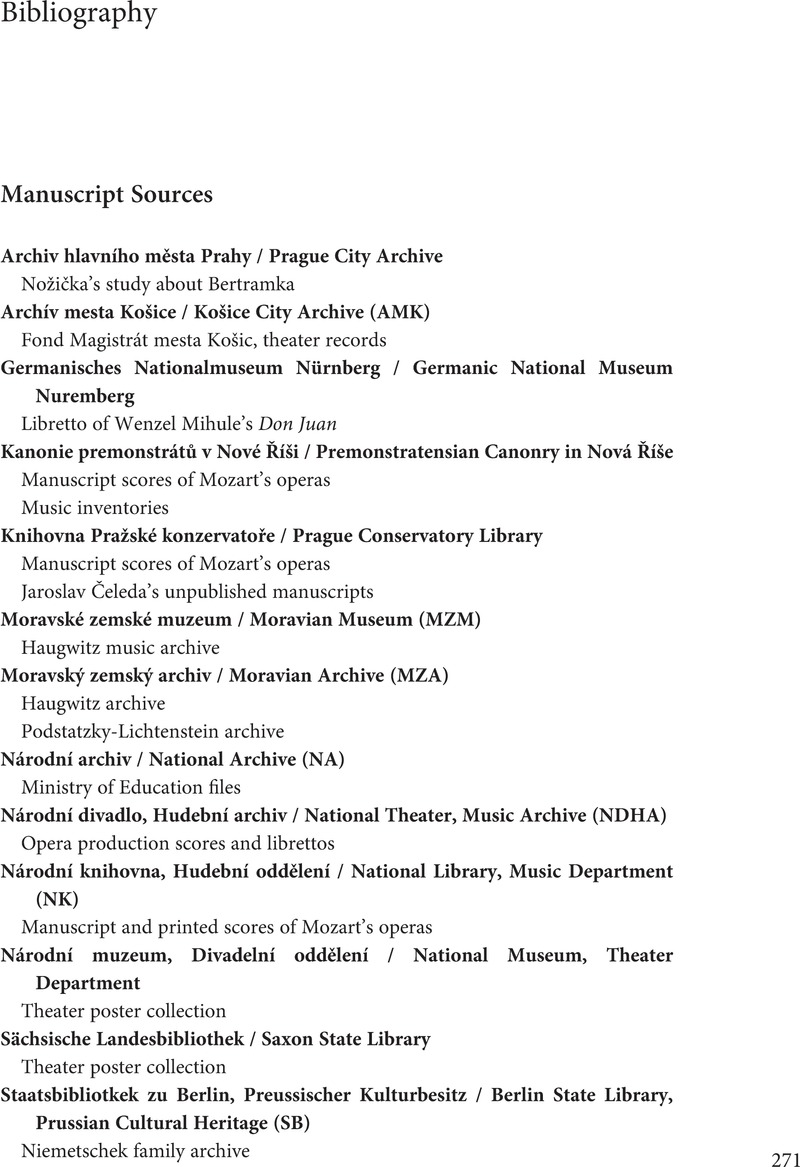Book contents
- Mozart’s Operas and National Politics
- Mozart’s Operas and National Politics
- Copyright page
- Dedication
- Contents
- Figures
- Tables
- Musical Examples
- Preface
- Acknowledgments
- Introduction
- Part I Authenticity and Ethnicity
- Part II Monuments and Politics
- Part III Translations and Adaptations
- Bibliography
- Index
- References
Bibliography
Published online by Cambridge University Press: 27 July 2023
- Mozart’s Operas and National Politics
- Mozart’s Operas and National Politics
- Copyright page
- Dedication
- Contents
- Figures
- Tables
- Musical Examples
- Preface
- Acknowledgments
- Introduction
- Part I Authenticity and Ethnicity
- Part II Monuments and Politics
- Part III Translations and Adaptations
- Bibliography
- Index
- References
Summary

- Type
- Chapter
- Information
- Mozart's Operas and National PoliticsCanon Formation in Prague from 1791 to the Present, pp. 271 - 286Publisher: Cambridge University PressPrint publication year: 2023



